Tips For Traveling During Typhoon Season In Vietnam
Vietnam, a country full of natural and cultural contrasts, has become a popular destination for travelers seeking both exotic adventures and authentic experiences. However, those planning to visit this incredible country should keep in mind one crucial factor: the typhoon season in Vietnam. From June through November, Vietnam experiences tropical storms and typhoons that pose certain risks, but should not discourage the more intrepid. With proper planning and a little flexibility, it is possible to enjoy a unique travel during typhoon season in Vietnam.
When is typhoon season in Vietnam?
Typhoon season in Vietnam generally runs from June through November, with a peak between August and October. These tropical storms form in the Pacific Ocean, advancing toward Vietnam's coasts with torrential rains, violent winds, and storm surges that can cause flooding and landslides. Each year, Vietnam experiences between four and six typhoons, some more devastating than others.
The most affected areas by typhoon season are central and northern Vietnam. Northern Vietnam, home to some of the country's most iconic natural and cultural wonders, is mostly affected by the typhoon season in June and July. Regions such as Hanoi, Ha Long Bay, and the Sapa mountains can continue to experience heavy rains and winds between August and October, which can disrupt travel plans. Flooding in these areas can be significant, and landslides in mountainous regions pose an additional risk.
Central Vietnam, especially coastal provinces such as Quang Binh, Thanh Hoa, Quang Tri, Thua Thien-Hue, and Quang Ngai, is usually affected in the latter half of typhoon season, from October to November.
However, southern Vietnam, including popular destinations such as Ho Chi Minh City and the Mekong Delta, generally experiences only intermittent rainfall, making them safer during this season.
Impact of typhoon season on infrastructure and tourism
One of the most important aspects to consider when you travel during typhoon season in Vietnam is the potential impact of storms on tourism infrastructure and services. Roads may become inaccessible due to flooding, airports may temporarily close, and transportation services such as trains and buses often suffer disruptions. In addition, beaches and outdoor activities are often out of service during periods of bad weather.
However, despite these inconveniences, Vietnam has a well-established system for dealing with weather emergencies. Local authorities constantly monitor typhoons and issue warnings to residents and tourists to take necessary measures. While storms can cause temporary disruptions, affected cities and provinces usually recover quickly, and many tourist areas have infrastructure in place to mitigate the effects of storms.
Should I travel during typhoon season in Vietnam?
Traveling during typhoon season in Vietnam isn’t necessarily a bad thing. In fact, it can offer several advantages that make it an attractive time to explore the country. For example, prices are usually lower due to the decrease in the influx of tourists. This means that hotels, flights, and tours tend to be cheaper, allowing travelers to enjoy a high-quality experience at a more affordable cost.
Consider early summer (May-June) for central Vietnam or late autumn (September-October) for the north. These periods tend to have less severe weather compared to the high season, and you will still be able to enjoy some outdoor activities. However, be prepared for intermittent showers.
Although typhoons are unpredictable, worrying excessively about their occurrence can negatively affect your experience in one of the world's most fascinating countries. Often, typhoons last only 2 to 3 days, followed by sunny days in northern and central Vietnam. If you decide to travel during this season, it is important to do so with caution. To minimize risks, stay informed about weather forecasts and plan a flexible itinerary. Below is a detailed guide to help you plan your travel during typhoon season.
Tips for traveling during typhoon season in Vietnam
Select your destination carefully
As mentioned, southern Vietnam is less affected by typhoons than the north and center. If you plan to travel during this season, consider destinations such as Ho Chi Minh City, the Mekong Delta, or the charming city of Dalat. These places usually experience sporadic rainfall rather than violent storms, allowing many tourist activities to be enjoyed without major interruptions.
Avoid the most vulnerable areas
Vietnam's central coastal provinces are the most vulnerable to typhoons. During peak typhoon season in Vietnam, Da Nang, Hue, Hoi An, and Quang Binh along with the mountainous areas across northern Vietnam such as Sapa and Ha Giang may experience severe flooding and landslides.
Monitor the weather closely
Stay informed about weather conditions through reliable sources such as local television or mobile apps. Vietnam's National Hydrometeorological Forecasting Center issues frequent updates on typhoon conditions and potential impacts in different regions of the country. It is also useful to follow social media and local tourist agency websites that often provide real-time updates.
Book flexibly
One of the golden rules for traveling during typhoon season is to book flexibly. Be sure to choose flights, hotels, and tours that offer penalty-free cancellation or change policies. Due to the unpredictable nature of storms, it's best not to book far in advance. Instead, opt for adjustable itineraries and tickets that can be refunded or changed without hassle.
Have a plan B
It is always good to have an alternative in case a typhoon affects your plans. For example, if you plan to visit Hue but the city is under a typhoon warning, you could detour to Ho Chi Minh City or the Mekong Delta, where the impact of storms is minimal. Also, consider tours with post-payment options, so you can cancel without losing money in case of weather disruptions.
Opt for services with a local agency
If you decide to travel during typhoon season in Vietnam, consider hiring the services of a local travel agency such as Vietnam Original Travel. Local agencies have in-depth knowledge of the weather and conditions specific to each region, allowing them to offer expert advice and adjustments to your itinerary in the event of bad weather. In addition, they can provide real-time logistical support and assistance, from rescheduling tours to ensuring your safety during adverse weather conditions. Working with a local agency not only gives you peace of mind and security, but also allows you to tap into their network of contacts and resources for a smoother and more enriching travel experience.
Where to travel during typhoon season in Vietnam
While typhoon season may limit some activities, Vietnam still offers a variety of fascinating destinations worth exploring during this time. Here we introduce you to some of the best places to visit during typhoon season in Vietnam:
Ho Chi Minh City
This vibrant southern metropolis is an ideal choice during typhoon season. Although there may be sporadic rainfall, the weather is generally warm and humid, and storms rarely cause significant disruptions. Ho Chi Minh City offers a wide range of indoor activities, such as visits to museums (the War Remnants Museum and the Museum of Fine Arts), historic temples (the Jade Emperor Pagoda), and covered markets (the Ben Thanh market). In addition, the city's nightlife is lively, with bars, clubs, and restaurants open late, allowing you to enjoy the city no matter what the weather.
Mekong Delta
The Mekong Delta, with its vast network of rivers, canals, and floating markets, offers an authentic and unique cultural experience. Despite seasonal rains, the region remains accessible and is an excellent place to explore rural Vietnamese life. Boating on the rivers, visiting local villages, and sampling fresh seafood are some of the highlights of this region. If you visit the Mekong Delta in November, you can also participate in the colorful Ok Om Bok Festival, a traditional festival of the Khmer people.
Phu Quoc Island
Phu Quoc Island, located in southwestern Vietnam, is an attractive destination during typhoon season due to its geographical location. Away from major typhoon routes and protected by its position in the Gulf of Thailand, Phu Quoc usually experiences only intermittent rainfall and milder climates compared to other parts of the country. With its white sandy beaches, crystal clear waters, and a variety of water activities, the island offers an ideal retreat for those looking to escape bad weather in other regions. In addition, Phu Quoc has a well-developed tourism infrastructure, making it easy to plan and organize excursions, activities, and accommodation, ensuring a pleasant stay even during the rainy season.
What to bring during typhoon season in Vietnam?
Traveling prepared is essential during typhoon season. Here are some essentials that will help you stay dry and safe while exploring Vietnam:
Raincoat or poncho: Torrential rains are common, so a good raincoat will allow you to stay dry while moving around town or sightseeing.
Waterproof footwear: Wear non-skid shoes or waterproof sandals. Many cities can flood briefly, so proper footwear is crucial to avoid accidents or discomfort.
Compact umbrella: A lightweight, windproof umbrella is a practical choice for moderate rainfall.
Quick-drying clothing: Opt for lightweight clothing that dries quickly, as humidity can be intense during this season.
Waterproof bag: Protecting your electronic devices, important documents and money is essential. Waterproof bags will keep your belongings safe from water.
Insect repellent: The rainy season can increase the presence of mosquitoes, so carry insect repellent to prevent bites and possible transmitted diseases.
More tips for safe travel during typhoon season in Vietnam
If you find yourself in an area affected by a typhoon, follow these recommendations to ensure your safety:
Seek shelter in a safe place: If the typhoon is underway, go to a protected location, such as a sturdy building or an interior room without windows. Avoid low-lying areas prone to flooding and seek shelter in elevated areas if possible.
Follow local guidance: During typhoon season, it is crucial to be attentive to guidelines from authorities and tour operators. If evacuation alerts or weather warnings are issued, follow instructions strictly to ensure your safety.
Avoid dangerous activities: Some activities, such as hiking in mountainous areas or water sports, can be extremely dangerous during a typhoon. Opt for safer activities, such as museum visits or indoor tours, to minimize risks.
Stay calm: Although typhoons can be frightening, Vietnamese authorities are well prepared to handle these situations. If you find yourself in the middle of a storm, follow the recommended precautions, stay calm, and trust that safety measures are in place.
Traveling during typhoon season in Vietnam may seem challenging, but with proper planning, it can be an unforgettable experience. One of the best options is to opt for the services of a local agency such as Vietnam Original Travel. Not only do we have in-depth knowledge of the country and its weather conditions, but we can also offer expert advice and customized solutions for your trip. In addition, if your itinerary is affected by the typhoon, we can help you rearrange it efficiently. Our expertise in emergency management will allow you to adjust dates, accommodations, and activities as needed, ensuring that you can adapt to the changes and still enjoy your Vietnam experience without the stress of having to make adjustments on your own.
>>> Best Time To Visit Vietnam: Weather & Travel Tips
>>> How Many Days Are Ideal For Vietnam?
Send us your comments about : Tips For Traveling During Typhoon Season In Vietnam
Required fields *
You might also be interested
Travel ideas
Need some inspiration? Discover some of the best tours in Vietnam, which are highly appreciated by our clients. An excellent starting point to help you choose the right trip to Vietnam, Laos, Cambodia, Burma or Thailand, whether you are traveling alone, as a couple, as a family or with friends.
And because this trip is yours, feel free to customize it as you wish!
Vietnam Cambodia Itinerary 14 Days
Hanoi – Hoa Binh – Mai Chau – Ninh Binh – Halong bay – Hue - Danang – Hoian – Saigon – Ben Tre - Can Tho – Saigon - Siem Reap Angkor - Tonlé Sap - Siem Reap – Ta Prohm - Departure
Vietnam 14 Day Itinerary
Vietnam 14-day itinerary covers the country’s top highlights and quintessential experiences for an unforgettable journey.
Honeymoon Tour Packages In Vietnam 12 Days
Saigon Arrival - City Tour – Mekong Delta – Danang – Hoian - by flight - Da Nang – Hanoi - by flight – Halong - overnight on junk – Departure
Authentic Hoang Su Phi Trekking Tours
Hoang Su Phi trekking tours take you to stunning terraces, meet few tourists, connect with locals and enjoy authentic culture.
Best Nha Trang Beach Tour 4 Days
Saigon/Hanoi – Nha Trang relaxation – Saigon/Hanoi – Departure
Mekong Delta Bike Tour Itinerary 7 Days
Cycle through the Mekong Delta in 7 days, discovering floating markets, orchards, craft villages, and tranquil green islands.
Are you interested in this tour?




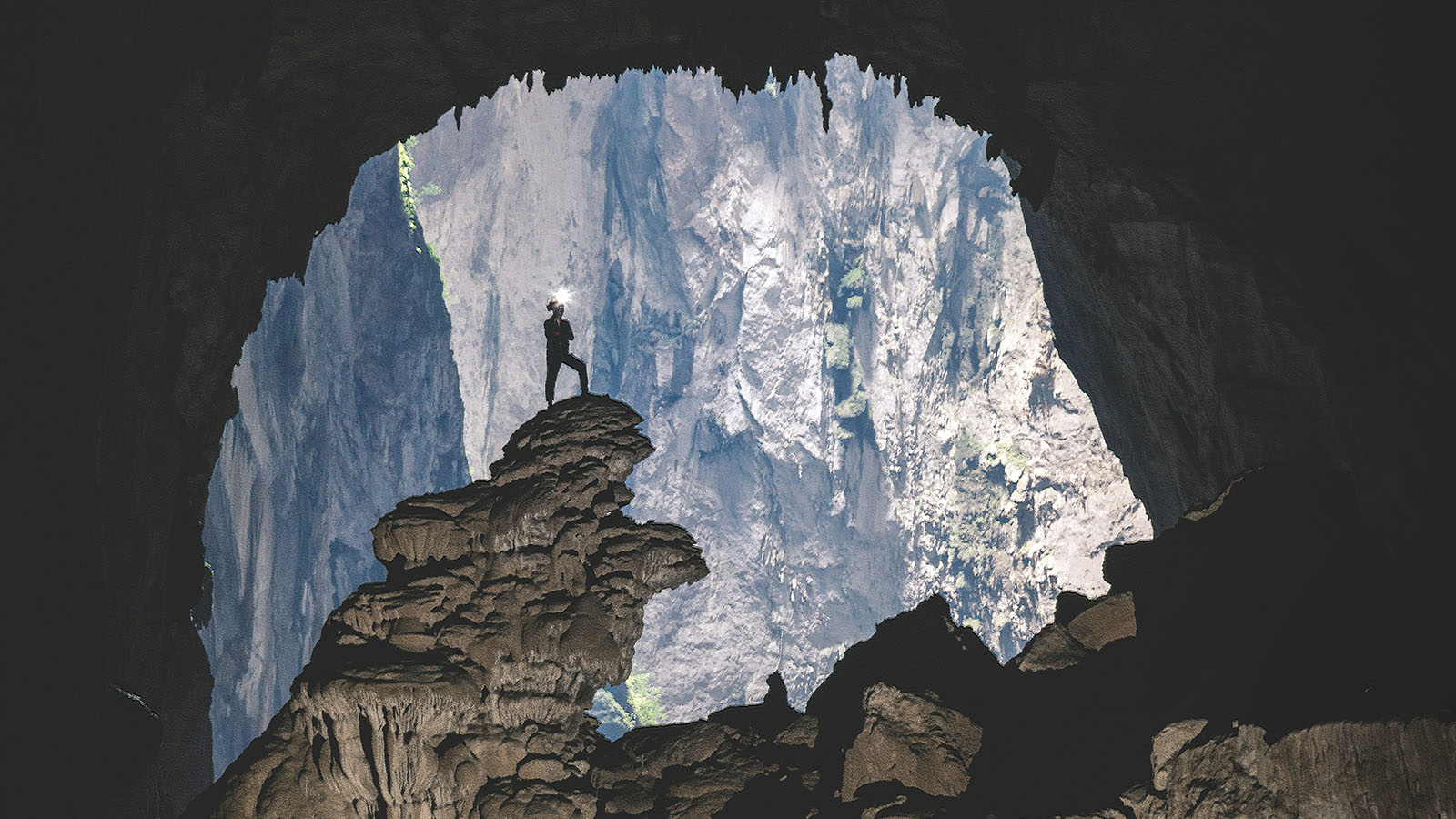





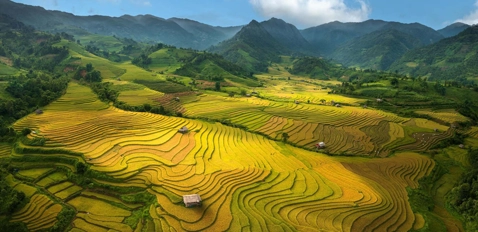




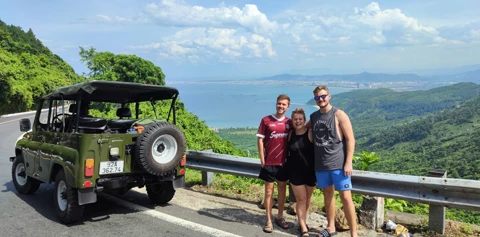


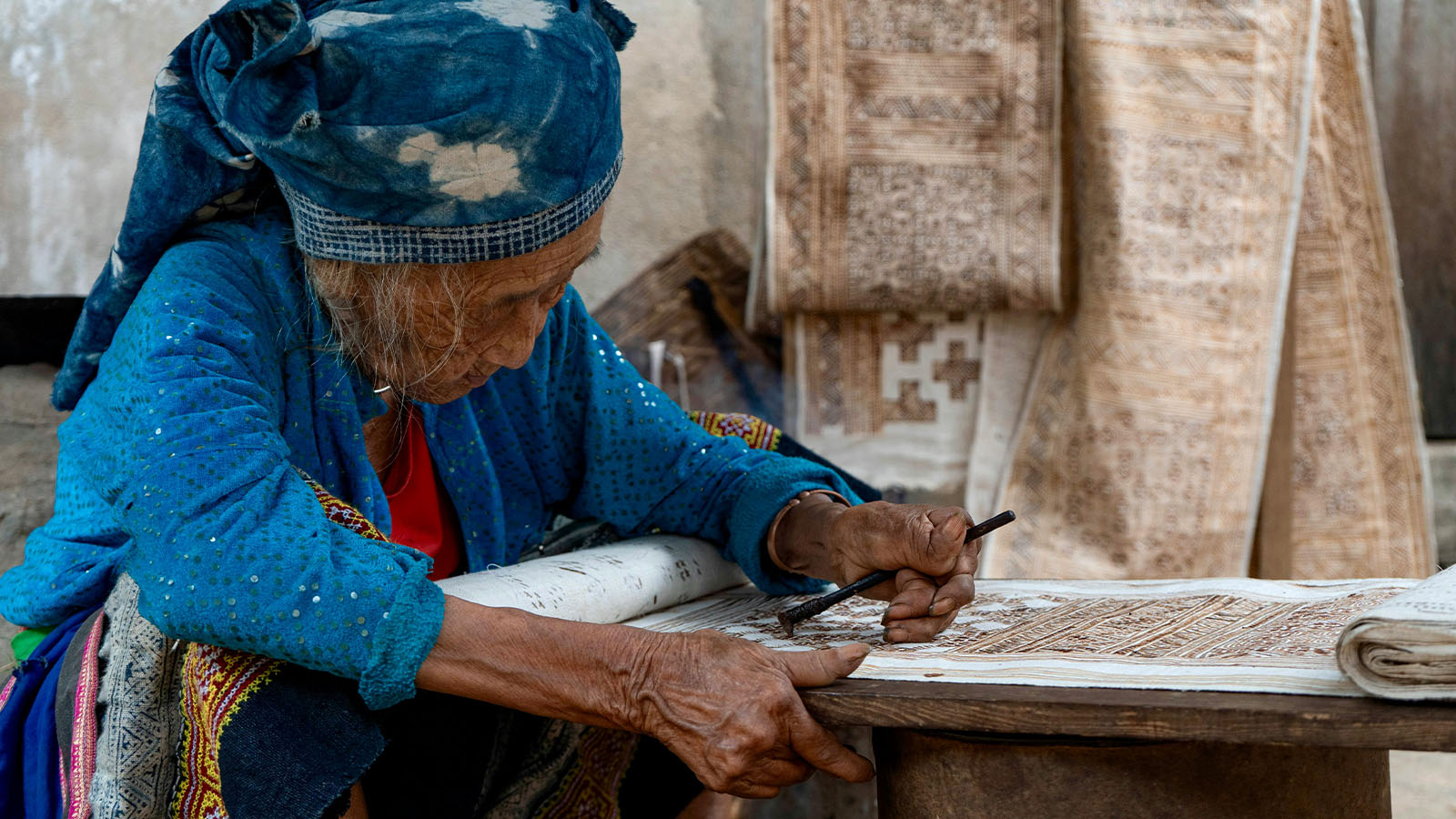



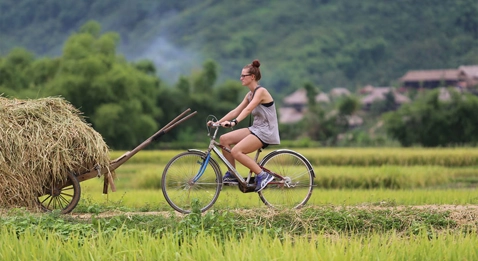

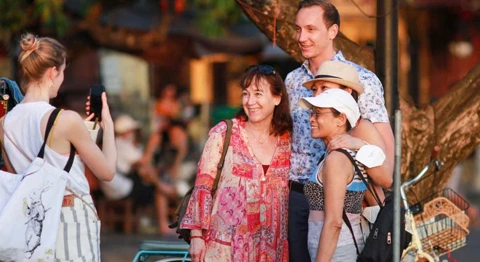
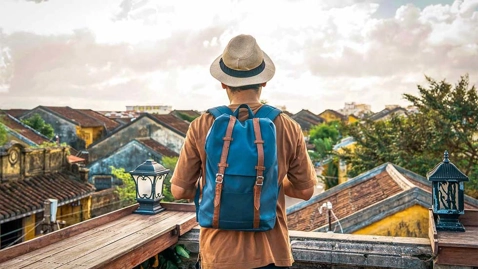













Comment